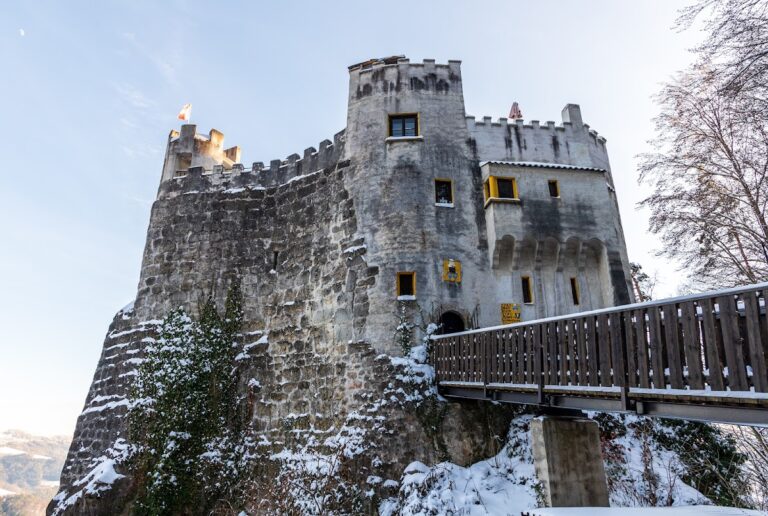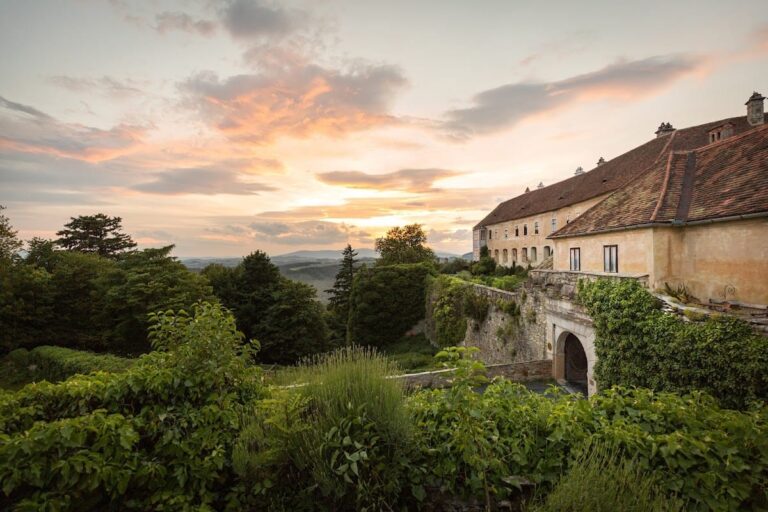Landsee Castle: A Historic Fortress in Markt Sankt Martin, Austria
Visitor Information
Google Rating: 4.7
Popularity: Low
Google Maps: View on Google Maps
Country: Austria
Civilization: Medieval European
Remains: Military
History
Landsee castle ruins stand in the municipality of Markt Sankt Martin in present-day Austria. The fortress was originally constructed by German-speaking settlers, with early historical ties reflecting both Germanic and Hungarian influences in the region.
The site’s earliest records date back to the late 12th century, naming nobles such as Erchenger von Landesehre linked to the castle in 1173 and 1179. These early mentions suggest the castle functioned as a ministerial seat serving the Counts of Pitten, at that time under the jurisdiction of the Duchy of Styria. The castle’s German name “Landeshere,” later rendered as “Lánzsér” in Hungarian—meaning “Lance bearer”—reflects its strategic and noble standing, though the exact origin of the name remains uncertain. By the early 13th century, around 1222, ownership shifted to the Kingdom of Hungary, marking a significant political change in the castle’s history.
Throughout the 13th century, the fortress passed into the hands of notable regional figures. Lorenz Athinai, the count (comes) of Ödenburg (modern Sopron), owned the castle during this period. In 1289, Duke Albert of Austria captured Landsee amid the Güssing Feud, a conflict illustrating the contested control over border fortresses between regional powers.
The mid-16th century brought the Teufel family into possession of the castle. A significant historical event from this era involves Erasmus von Teufel, who served as an imperial official and cavalry commander. In 1552, during diplomatic negotiations in Transylvania, he was taken prisoner by Ottoman forces and died by execution, underscoring the turbulent times along the empire’s frontiers.
In 1612, Nikolaus Esterházy, initially a baron and later raised to count, acquired Landsee. The Esterházy family would hold the castle for nearly two centuries. A devastating fire on July 12, 1707, ravaged the northeast sectors housing the owner’s chambers. Despite repairs, the castle’s condition weakened over time. Another fire struck on June 2, 1790, compounding the decline. The death of Prince Nikolaus I Esterházy later that year and the financial difficulties of his successor, Prince Anton, led to abandonment of the castle in favor of more viable estates.
By 1802, the fortress had been described as dilapidated and was subsequently quarried for building materials by locals. No longer serving a defensive or noble residential purpose, the castle fell into ruin, preserving the echoes of its complex past within its crumbling walls.
Remains
The ruins of Landsee castle spread across an area roughly 300 by 200 meters, revealing a complex defensive system crafted through four concentric rings of fortifications. The earliest fortifications featured a pair of ditches separating the first ring of walls, showcasing an emphasis on layered defense. The outermost wall ring stands as the most recent addition, though it remains poorly preserved today.
Entry into the castle was controlled through multiple gateways, each progressively more fortified. The first gate, dated 1668, presents a relatively simple design. Beyond it, visitors would have crossed a wooden bridge spanning the first ditch to reach a heavily fortified second gate. Further along, a second wooden bridge over the second ditch led to the third gate. Past this point lies a spacious outer courtyard, setting the stage for the inner defenses.
Advancing inward, the fourth gate—located toward the south—opened into a narrow courtyard, while a fifth gate in the same area has collapsed over time, giving way to a courtyard where the residential structures once stood. Most of these living quarters have fallen to their foundations, yet their layout remains identifiable.
A staircase through the sixth gate ascends to the central keep or donjon, the heart of the fortress. This central building included the castle kitchen, whose location can still be discerned in the ruins. The keep itself features formidable walls up to ten meters thick, particularly fortified on the western side facing Austria, highlighting the direction from which the greatest threats were anticipated. In contrast, the eastern living quarters rested on steep slopes, providing natural protection.
Attached to the donjon are several towers, among them a chapel tower built between 1460 and 1485. Dedicated originally to St. Ursula, this tower houses a stairway added in modern times, leading to the former roof area where a distinctive standalone masonry arch remains. From here, panoramic views extend toward nearby Sopron, southern Lake Neusiedl, and the Bucklige Welt, the rolling hill landscape farther east.
Outside the main castle, the site’s cemetery lay along the access road and included the first parish church of Landsee, consecrated to St. Nicholas. Historical records from 1647 remark on the church’s ancient origins. Between 1650 and 1679, the castle complex saw the addition of a Baroque chapel also dedicated to St. Nicholas, reflecting continued religious devotion associated with the fortress.
Today, the ruins have been secured to prevent further decay. The broad outer courtyard remains an open space where various cultural gatherings now take place, linking the fortress’s historical legacy with contemporary communal life.










